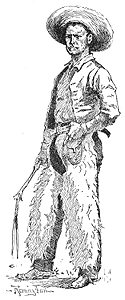
| Photos From Wyoming Tales and Trails This page: Gillette, Newcastle, Sundance, Moorcroft |
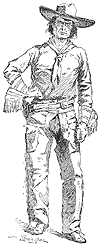 |

| Photos From Wyoming Tales and Trails This page: Gillette, Newcastle, Sundance, Moorcroft |
 |
[ Cambria ] [ Big Horn Basin ] [ Thermopolis ] [ Buffalo ] [ Photos V ] [ Laramie ] [ Lander ] [ Medicine Bow ] [ Cheyenne ] [ Sheepherding ] [ Superior ] [ Sheridan ] [ Kemmerer ] [ USS Wyoming ] [ Ghost Towns ] [ Black Hills ] [ Rock Springs ] [ Centennial ] [ Deadwood Stage ] [ Lusk ] [ Douglas ] [ Encampment ] [ Rudafeha Mine ] [ Rawlins ] [ Casper-N. Platte Valley ] |
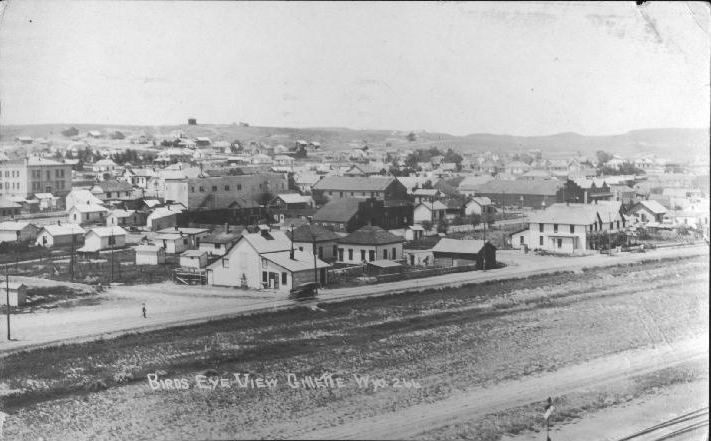 Gillette, 1924 1913 view of Gordon Avenue below left. Strictly speaking Gillette is not in the Black Hills of
Wyoming being some 23 miles to the west of the Belle Fourche which is regarded as the
western edge of the Black Hills.
Gillette was founded in 1891 with the arrival of the Chicago, Burlington and Quincy Railroad. Originally the railroad
was going to follow Donkey Creek with the station
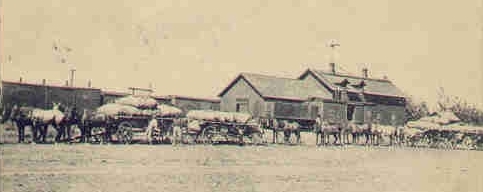 Gillette, 1911 1919 view below right.
Robert Campbell emigrated to the United States from Northern Ireland in 1824 and was
advised to seek mountain air as a cure for his tuberculosis. Thus, he joined Ashley's
fur trading company and by 1826 was in charge of the various trapping parties. He became a
partner of William Sublette John Allen Campbell, a brevet brigadier general during the Civil War, was appointed territorial governor by President Grant and served between 1869 and 1875. Although he is most noted for signing in 1869 legislation providing for the first universal sufferage in the United States, Gov. Campbell may also be regarded as the father of the Wyoming National Guard. At his urging the Legislature in 1870 authorized the formation of volunteer militia units. As a result several short lived units were formed in the Territory including the Cheyenne Rangers in 1873, the Wyoming Home Guard in Laramie and Cheyenne in 1874, and the Wyoming Rangers in Lander. Following his service as governor, Campbell served as an assistant secretary of state and as American consul in Basel, Switzerland.  Newcastle, Wyoming
Compare with 1953 photo below left.
Newcastle was established by J. H. Hemingway, superintendent of the Cambria
Coal Company, and was named by Newcastle shortly thereafter was incorporated and the first mayor, Frank W. Mondell 1860-1939) was elected on Nov. 12, 1889. Mondell, a Republican, was elected to Congress in 1895, was succeeded by John Eugene Osborne in 1897, and was returned to Congress in 1899 and continued to serve until 1923. He was responsible for an amendment to the act creating territorial status for Alaska that authorized women's sufferage. He also served as majority-leader at the time that Congress authorized submitting to the states a constitutional amendment authorizing women's sufferage. By 1895, Newcastle had a population of almost five times that of Cambria, an older town some 10 miles away. See discussion of Cambria. 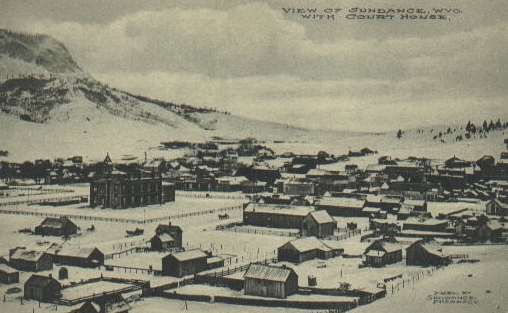 Sundance, undated
Although, the Black Hills were reputedly the first area of Wyoming to be
explored, it was also the last. Joseph and
Francois Verendrye, French-Canadians, explored portions of Montana and Northeastern
Wyoming as early as 1743. Because of Indian threats the Black Hills were not explored until much later than the
rest of Wyoming. Early expeditions, however, included those of G. K. Warren in 1857, and that of
George A. Custer of 1875. This is not to say that no European explorers ventured into the
area until then. As indicated on Photos II, He was but thirty-six. In him everything was made secondary to patriotism and love of his people. Modest, fearless, a mystic, a believer in destiny, and much of a recluse, he was held in veneration and admiration by the youngest warriors, who would follow him anywhere. These qualities made him a danger to the government and he become persona non grata to evolution and to the progress of the white man's civilization, Hence his early death was preordained. At about eleven p.m. that night in the gloomy old adjutant's office, as his life was fast ebbing, the bugler on the parade ground wailed out the lonesome call for Taps, "Lights out, go to sleep!" It brought back to him the old battles; he struggled to arise, and there came from his lips his old rallying cry, "A good day to fight, a good day to die! Brave hearts...." and his voice ceased, the lights went out and the last sleep came. It was a scene never to be forgotten, an Indian epic. The bayoneting of Crazy Horse by Indian Police is still a matter of dispute; that is, whether it was murder or was Crazy Horse attempting to escape when he realized that he was to be a prisoner. McGillycuddy also served as the head of the Pine Ridge Agency in Dakota Territory where he came into comflict with Red Cloud particularly with regard to his attempts to starve the Indians into submission to his plan of sending the children off to boarding school at Carlisle to become white men and women.
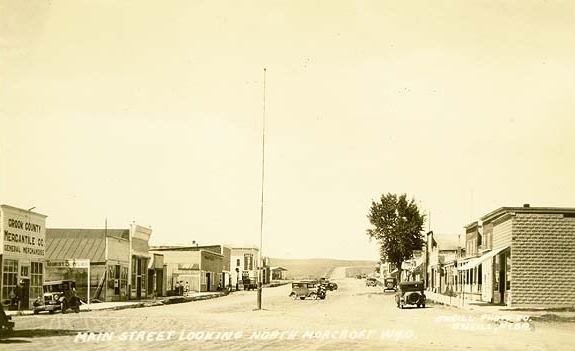 Moorcroft, approx. 1928 In 1876 Alex Moorcroft, after whom Moorcroft is probably named, became one of the first settlers of the Black Hills area of Wyoming when he settled on Sand Creek near present day Beulah. Two other versions of the naming of Moorcroft exist: (a) that the town was named by the first postmaster, Stocks Miller, after a town in Scotland, and (b) it was named after an 1890's visitor to the area who liked to hunt. The latter two explanations would appear to be improbable. An exhaustive search has been made to locate a Moorcroft in the U.K. Only three places (other than roads or streets), named "Moorcroft" were found, one a lunatic asylum that existed in the 1840's at Uxbridge in Middlesex, a colliery that existed in the late 1800's in Wednesbury in the West Midlands, and a pottery. The colliery is a possiblity in light of the naming of Cambria and Newcastle. Locations along the railroad were most often named by the railroad itself, usually with a pattern. As to the visitor in the 1890's, the post office bore the name Moorcroft in 1889.
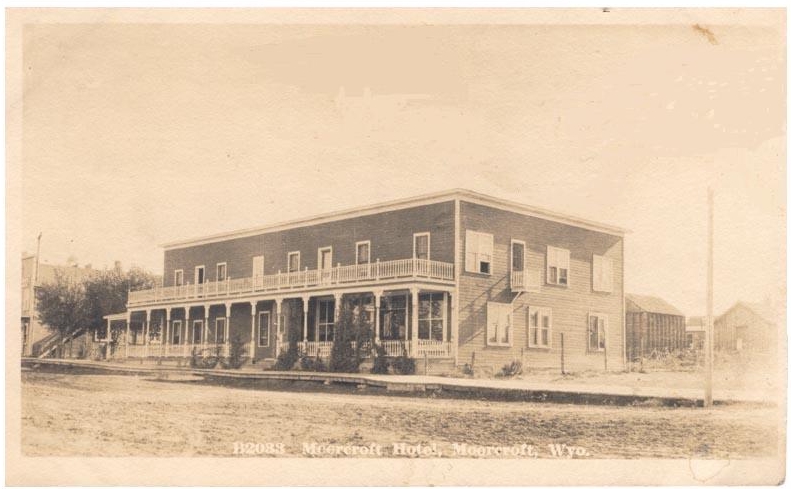 Moorcroft Hotel, approx. 1910 The railroad reached Moorcroft in 1891 and the town rapidly became the largest shipping point on the Chicago, Burlington and Quincy. The town was on the Texas Trail and at its height in 1894 some 32 herds passed through going from Texas to Montana. Each herd had from 2,000 to 3,000 head. By the early 1900's the town had 3 general stores and 5 saloons. In 1880 stage service was established between Spearfish, S.D. and Sundance.
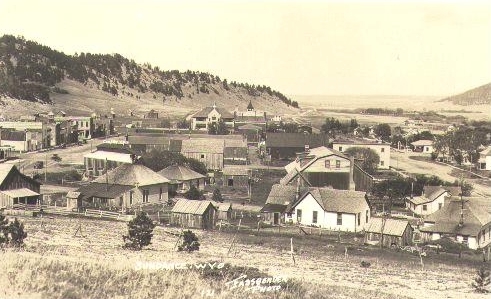 Sundance, undated
|